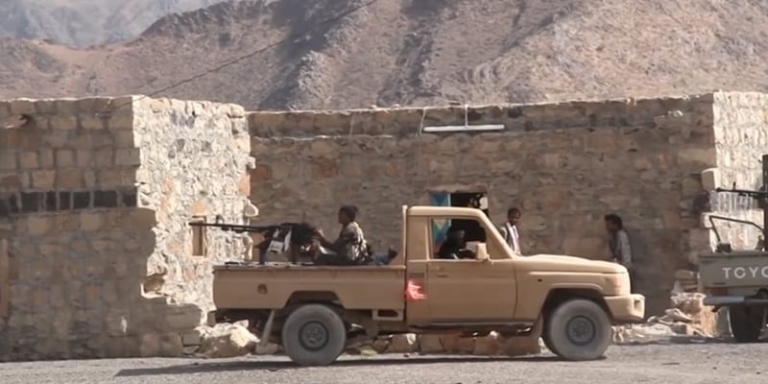
After a lull in the fighting, roughly from September to December 2019, violence has resumed actively across Yemen with bold—if futile—attacks on several fronts. To the northeast of Sanaa, an attack by forces loyal to President Abdrabbuh Mansour Hadi in the Jabal Nihm plateau failed; its aim was to change the strategic balance in the area. The result was indeed a change, but in the Houthi rebels’ favor, as their forces returned to positions they had occupied in their initial push southward and eastward during 2014-2015. A northwest attempt by Hadi forces to encircle Saadah, the Houthi stronghold, was stymied and that front is now quiet. In the south and west, which comprise two separate fronts, the cities of Taiz/Dalea and Hodeida saw clashes that have now somewhat subsided without any change on the ground. Meanwhile, the air war seems to have resumed, with Saudi air strikes in the capital city and a return to some rocket launches by the Houthis into Saudi territory.
These developments are a huge disappointment to peace advocates and mediators, especially after what had seemed like positive steps toward ending the war. Two such initiatives stand out: the Riyadh Agreement between the Hadi government and southern secessionists last November, which was seen by some as a building block toward a general peace; and Houthi-Saudi talks in Oman, which were also a hopeful sign that the major combatants had grown tired of the conflict.
The Stalemate
The adage that truth is the first casualty in war is certainly borne out in the Yemen conflict. Each side exonerates itself and lays full responsibility for the war at the feet of its opponents. There is surely enough blame to go around. The Houthis/Ansar Allah (AA) were overly ambitious in 2014 when they took Sanaa by force, overthrowing President Hadi and heading south and east, with the assumption they could take over the whole country. It was not so much the Saudi-led Arab coalition bombardment that stopped them but rather the resistance of the southerners. Saudi Arabia launched a war to uproot AA from Sanaa and restore President Hadi to power in the nation’s capital, stating all along that it was fighting Iran’s influence in the region. Thus far, it has not been Iran holding them back but rather a resilient Houthi fighting force that has proven more than a match to the superior technology and number of militias deployed against them.
Five years on, neither the Hadi government nor the Houthi insurgents have accomplished their original goals. Presuming they both realize this and are now ready to change course, a peace plan that meets their minimal requirements and not their highest ambitions could and should be put together.
Five years on, neither the Hadi government nor the Houthi insurgents have accomplished their original goals. Presuming they both realize this and are now ready to change course, a peace plan that meets their minimal requirements and not their highest ambitions could and should be put together as quickly as possible. Yemen is currently not only a failed state but, more ominously, a nation that has sunk into poverty, disease, and starvation.
International peace plans have failed because they have not grappled with the big picture, spending much time on truces and confidence building measures such as the Stockholm-Hodeida agreement and prisoner exchanges which, though crucial on a humanitarian level, do not treat the root causes of the war. The antagonists themselves have also failed thus far to present realistic and detailed roadmaps toward a comprehensive peace.
The Riyadh Agreement, signed on November 5, 2019, capped a war over the control of Aden between United Arab Emirates-supported forces in southern Yemen and troops loyal to President Hadi. This serious schism between forces supported by the Arab coalition against the Houthis threatened to break up the anti-Houthi coalition completely and pointed to some serious disagreements between Saudi Arabia and the UAE. The Saudis stepped in to separate the forces in Aden, asserting their control over the strategic port city, and prevailed over the Southern Transitional Council (STC) and the Hadi government to sign an agreement merging their political and military institutions, at least on paper. More than two months into the agreement, the merger has yet to happen and tensions and disagreements abound. In the best of circumstances, a unified Hadi-STC front does not in itself portend peace for Yemen. The larger part of the puzzle is a Saudi-Houthi agreement to cease fire and sit down for an all-Yemen peace conference. In fact, given the lack of progress in Houthi-Saudi talks and the recent resumption of violence, suspicion has been expressed that the Riyadh Agreement was merely an attempt to unify the anti-Houthi forces in preparation for a final assault on Sanaa and the Houthi stronghold in Saadah.
The Stockholm-Hodeida agreement, signed on December 13, 2018, also dealt with one piece of the greater puzzle—that of the port city of Hodeida, an embattled but critical port of entry for humanitarian assistance. The Houthis held on to the city since their advance south in 2014 while the Arab coalition-supported forces carried out several failed assaults to take it back and deny the Houthis unfettered access to the important port. Though touted a success by special UN envoy Martin Griffiths, nine months of negotiations brought a weary cease-fire to the city and a minor repositioning of forces, all while battles north and south of the city continued and an exchange of air power and rocketry persisted. The full agreement was never implemented and, until now, it has not served as a jumping-off point to a full peace for Yemen.
The national dialogue conference (NDC), concluded in January 2014, used too wide a lens. It addressed such questions as democracy, the rule of law, and the status of women and civil society groups but it failed to secure an agreement on the status of the northern and southern regions.
By contrast, the national dialogue conference (NDC), concluded in January 2014, used too wide a lens. It addressed such questions as democracy, the rule of law, and the status of women and civil society groups but it failed to secure an agreement on the status of the northern and southern regions, and in particular, the number of regions and administrative districts to which the country would be divided under a decentralized government. In September of that year, the Houthis/Ansar Allah harbored suspicions that their desire for local self-government and rights for their region were not being met, so they took the capital Sanaa by storm and drove out the elected government of President Hadi, precipitating an all-out war launched by Saudi Arabia and the UAE in an attempt to reverse their coup.
A Roadmap
In a no-victor, no-vanquished scenario, each side to the conflict must refrain from demanding total surrender of the other. One side cannot win in negotiations what it could not achieve in war; a compromise that satisfies the core needs of each side can and must be achieved. It is possible to halt the human suffering and rebuild trust, based on assuring the basic security needs of all concerned.
A comprehensive peace plan must begin with a general cease-fire agreement between Saudi Arabia and the Houthi/Ansar Allah leadership, the two main combatants with enough control over other forces on the ground to be able to drag them along to a peace agreement. This could begin with stopping the air war, with a cessation of bombardment by the Arab coalition in exchange for a Houthi agreement to cease lobbing rockets and flying drones across the northern border. In September 2019, the Houthis did in fact announce a unilateral cessation of their air war with Saudi Arabia. This eased tensions and led to a partial exchange of prisoners, but it did not sufficiently motivate the Saudis to suspend their air attacks.
A comprehensive peace plan must begin with a general cease-fire agreement between Saudi Arabia and the Houthi/Ansar Allah leadership, the two main combatants with enough control over other forces on the ground to be able to drag them along to a peace agreement.
A cessation of the air war should make it safer for forces on the ground to silence their guns on the various fronts. To demonstrate real intent for concluding a peace agreement, there must be a stop to the Saudi-supported forces’ attempts to encircle the Houthis by attacks in the northwest and northeast of Yemen. In the south, the siege of Taiz, imposed by the Houthis, must be lifted to prove they no longer wish to conquer the important southern city. Attempts to seize Hodeida that are equipped and supported by the UAE and conducted by the former President Saleh’s nephew, Tareq Saleh, must also come to an end.
The main Yemeni protagonists are fighting for self-government and for a fair share of the country’s resources. A sharing arrangement is not hard to reach and most of its elements were already put in place in the Peace and Partnership Agreement of 2014. The problem is that this agreement, which broke down soon after it was signed, left the finer details—such as the specific needs of both the northern and southern regions—to be mediated by President Hadi. The parties to the agreement need to get back to the negotiating table and, this time, to sign on the dotted line only after all have stated and agreed on all demands.
The ongoing military clashes in Yemen cannot advance the interests of the warring parties. The balance of forces simply does not allow for total victory by either side to the conflict. The Houthis continue to have the strongest single force on the ground, with ample strategic and technical advisors from Iran and Lebanese Hezbollah. Their unity and discipline make for a strong defense around the main region they are fighting to keep under their control. The Houthis, however, continue to be largely landlocked and under a difficult siege. The Arab coalition-supported forces, on the other hand, have superior technology and air power and seemingly unlimited funding to continue fighting, certainly as long as they continue to have regional support. It is noteworthy that they are quite divided among themselves, with a corrupt and inept government to lead them by remote control from Riyadh. Moreover, there is growing dissension between the principal patrons, Saudi Arabia and the United Arab Emirates.
The Yemeni population will not be able to sustain itself if this conflict continues much longer. The victors, if any, will find themselves with pyrrhic victories and a diminishing and devastated population over which to rule.

